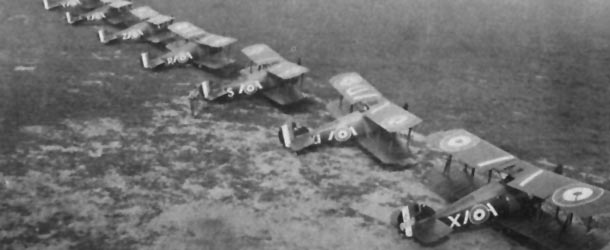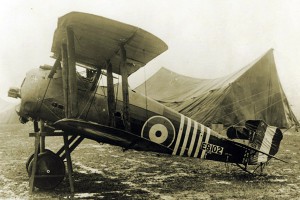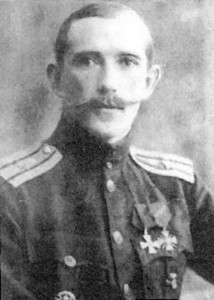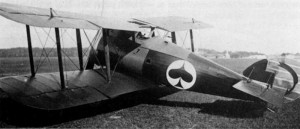Following the article presenting the Sopwith Snipe, let's learn something about the pilots who flew the versions of this fighter featured in the Wings of Glory Airplane Packs: the Canadian Ace William George "Billy" Barker, the Russian Ace Alexander Alexandrovich Kazakov, and Russian pilot Grigoriy Stepanovich Sapozhnikov.
William George "Billy" Barker
William George "Billy" Barker was one of the most awarded aces of the First World War, and the most decorated war hero in the history of Canada, the British Empire, and the Commonwealth of Nations. He was already presented here in an article about the Sopwith Camel pilots.
Barker scored 50 victories in WW1, shooting down 46 aircraft and balloons from September 1917 to September 1918, in a total of 404 operational flying hours with his Sopwith Camel (serial no. B6313). When the Camel was dismantled in October, he selected the Sopwith Snipe as his personal machine, he attached himself to No. 201 Squadron RAF. He was awarded the Victoria Cross for his actions on 27 October 1918, when he scored his last four wins in the war.
That day, while returning in his Snipe to an aircraft depot, he crossed enemy lines at 21,000 feet above the Forêt de Mormal. He attacked an enemy Rumpler two-seater which broke up, its crew escaping by parachute. By his own admission, he was careless and was bounced by a formation of Fokker D.VIIs of Jagdgruppe 12, consisting of Jasta 24 and Jasta 44. In a descending battle above the lines of the Canadian Corps, against 15 or more enemy machines, Barker was wounded three times in the legs. Then his left elbow was shot away, yet he managed to control his Snipe and shoot down or drive down three more enemy aircraft. Severely wounded and bleeding profusely, Barker force landed inside Allied lines.
His life was saved by the men of an RAF Kite Balloon Section, who transported him to a field dressing station. The fuselage of his Snipe aircraft was recovered from the battlefield and is preserved at the Canadian War Museum, Ottawa, Ontario. After the war, only partially recovered from the severe injuries, he returned to Canada. He died in a plane, at age 35, during a demonstration flight for the RCAF near Ottawa, Canada.
Alexander Kazakov
Alexander Alexandrovich Kazakov, born 2 January 1889, awarded with the British Distinguished Service Order and Military Cross and the French Légion d'Honneur, was the most successful Russian flying ace and fighter pilot during the First World War.
Born to a Russian noble family in Kherson Governorate, Kazakov graduated from Yelizavetgrad cavalry school in 1908. He did his stint in cavalry, but in 1913 he began formal training as a pilot and graduated at the beginning of World War I from Gatchina military aviation school.
Kazakov flew in Morane-Saulnier, Spad – SА2, Nieuport 11, and Nieuport 17 aircraft and is alleged to have the largest number of victories over enemy aircraft among Imperial Russian Air Force pilots. Kazakov, in the Imperial 19th Squadron’s “Death or Glory Boys,” had 32 unofficla victories, but only 17 or 19 or 20 confirmed kills (tallies vary), because only planes crashing in Russian-held territory were counted. Russian military aviation tradition during World War I was different from its Western allies and rivals, and individual pilot scores were considered to be of lesser value compared to their contribution to the overall war effort.
On 31 March 1915 Kazakov successfully repeated an aerial ramming attack first attempted by Pyotr Nesterov, using a Morane-Saulnier G as his piloted projectile. For this bit of daring, he was awarded the Order of Saint Anne, first in the Fourth Class, then in the Third. He was appointed to command of 19th Corps Fighter Detachment in September 1915. Here he flew Nieuport 10s and Nieuport 11s. Between 27 June and 21 December 1916, he racked up four more victories to become an ace.
Five months later, on 6 May 1917, Kazakov resumed his winning streak with his sixth victory, which was shared with Ernst Leman and Pavel Argeyev. By 25 May, with his eighth win, he switched to a Nieuport 17, which he used thereafter. Between 1915 and 1917 he fought on the Russian front and in Romania, participating in the Brusilov Offensive as a commander of 1st Combat Air Group. In January 1918, in the wake of the Russian Revolution, Kazakov resigned his Russian commission.
During the Russian Civil War Kazakov joined the Slavo-British Allied Legion in Arkhangelsk and fought against the Workers' and Peasants' Air Fleet.
In the Murmansk area, severe winter weather generally hampered aerial operations. The White and Allied forces based at Murmansk (a mix of British and French) had the support of a small number of British naval aircraft. The White Russians had 37 air and ground crew from the former Imperial Air Service (IAS), under Captain Kazakov. Equipment consisted of nine Nieuport 17C and Sopwith 1½ Strutters, late of the IAS, found still in their crates at Bakeritza. These aircraft were organized into two flights, later strengthened with some British reinforcements.
On 1 August 1918 Kazakov became a major in the Royal Air Force and was appointed commanding officer in charge of an aviation squadron of the Slavo-British Allied Legion, using Sopwith Camels. After the British withdrawal from Russia, which left the Russian White Army in a desperate situation, Kazakov died in a plane crash during an air show on 1 August 1919, which was performed to boost the morale of the Russian anti-Bolshevik troops. Kazakov used the Sopwith Snipe as his primary aircraft and died while performing a stunt in a Snipe during an air show. Most witnesses of the incident, including British ace Ira Jones, thought Kazakov committed suicide.
Grigoriy Stepanovich Sapozhnikov
Grigoriy Stepanovich Sapozhnikov served with the Russian Empire AF from the end of 1916. In May 1918, he joined the Red Army and actively fought against the White Guards. By the late war, the British needed a replacement for the aging Sopwith Camel. The new fighter to take up the fight was the Sopwith 7F.1 Snipe.
Delivery of the new aircraft to the RAF began in the early Autumn of 1918. The Snipe was faster, easier to fly and structurally stronger than the Camel. These traits helped the Snipe become the preferred front-line RAF fighter during the early postwar era.
Documents show that three Snipes were known to have served with the Soviet Air Service. One unsolved mystery is how these aircraft were acquired. Records show no Royal Air Force units supplied with Snipes operating in Russia.
The same can be said for the Polish squadrons opposing the Bolshevik forces. Two of the Snipes are fairly well known; almost nothing is known about the third.
But the most famous of the Soviet Snipes was serial number E6351, which was assigned to the 1st Fighter Detachment. Pilot Grigoriy Stepanovich Sapozhnikov had the name “Nelly” painted on the starboard side of the fuselage behind the cockpit. He was killed in a flying accident during take off in 1920.
Information sources: Military History, Avalanche Press, Wikipedia, Encyclopedia of Safety, Wings Palette, Their Flying Machines, Vintage Wings of Canada.












